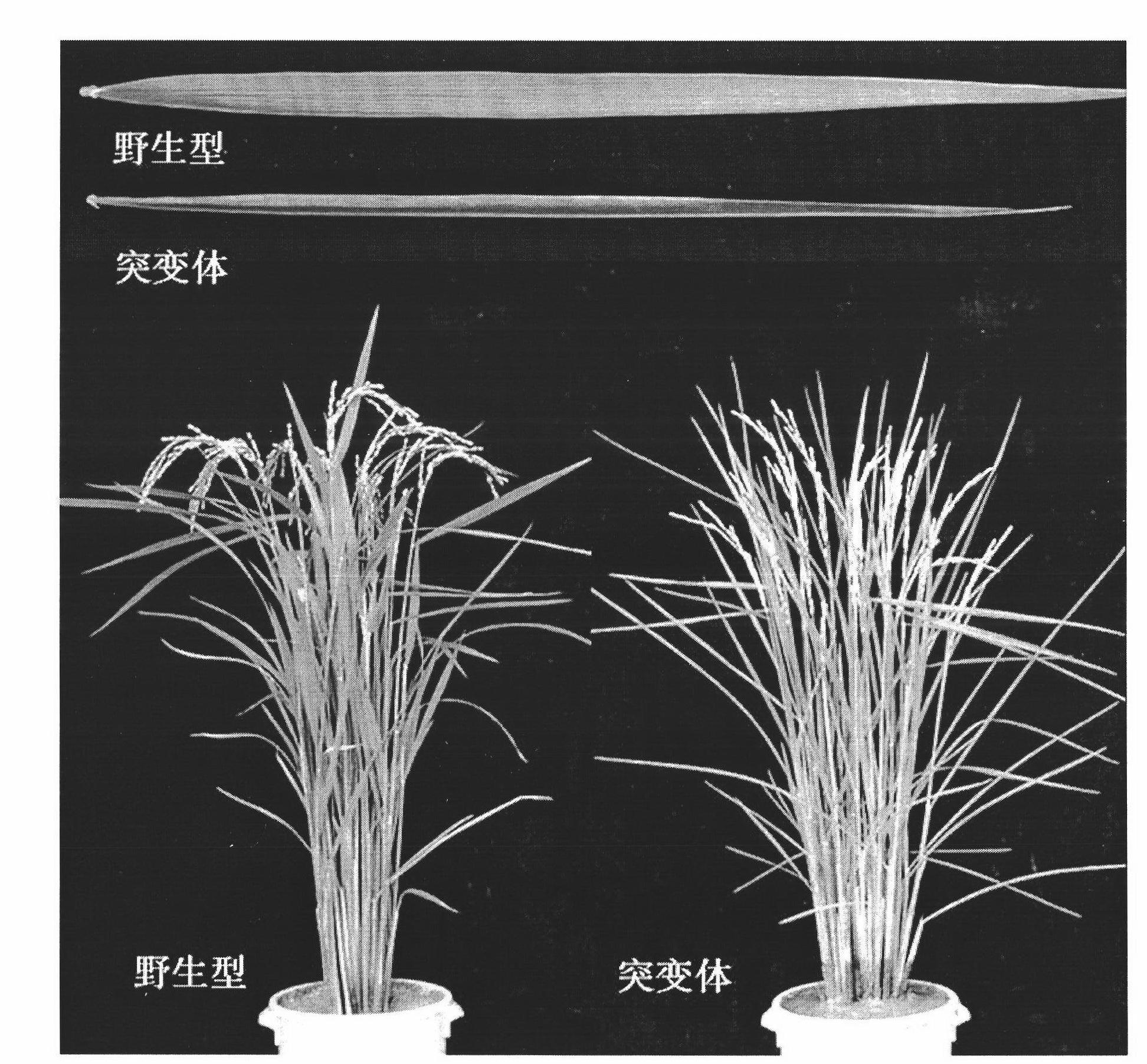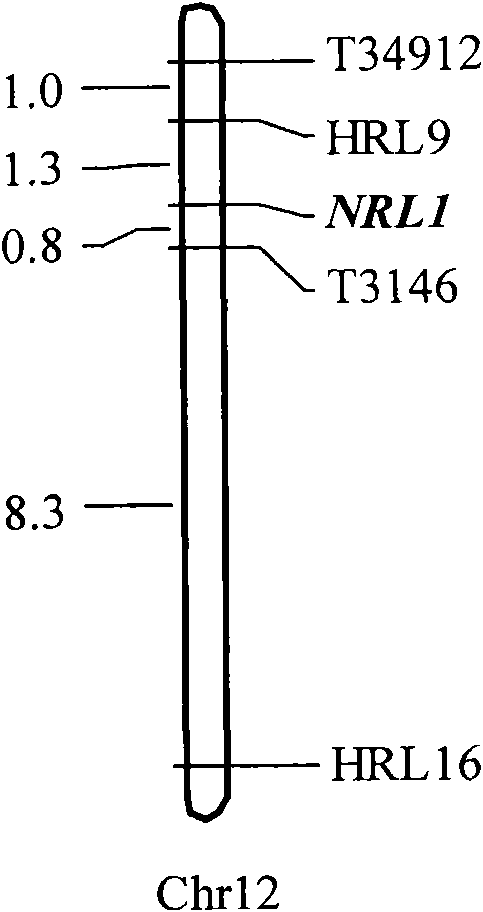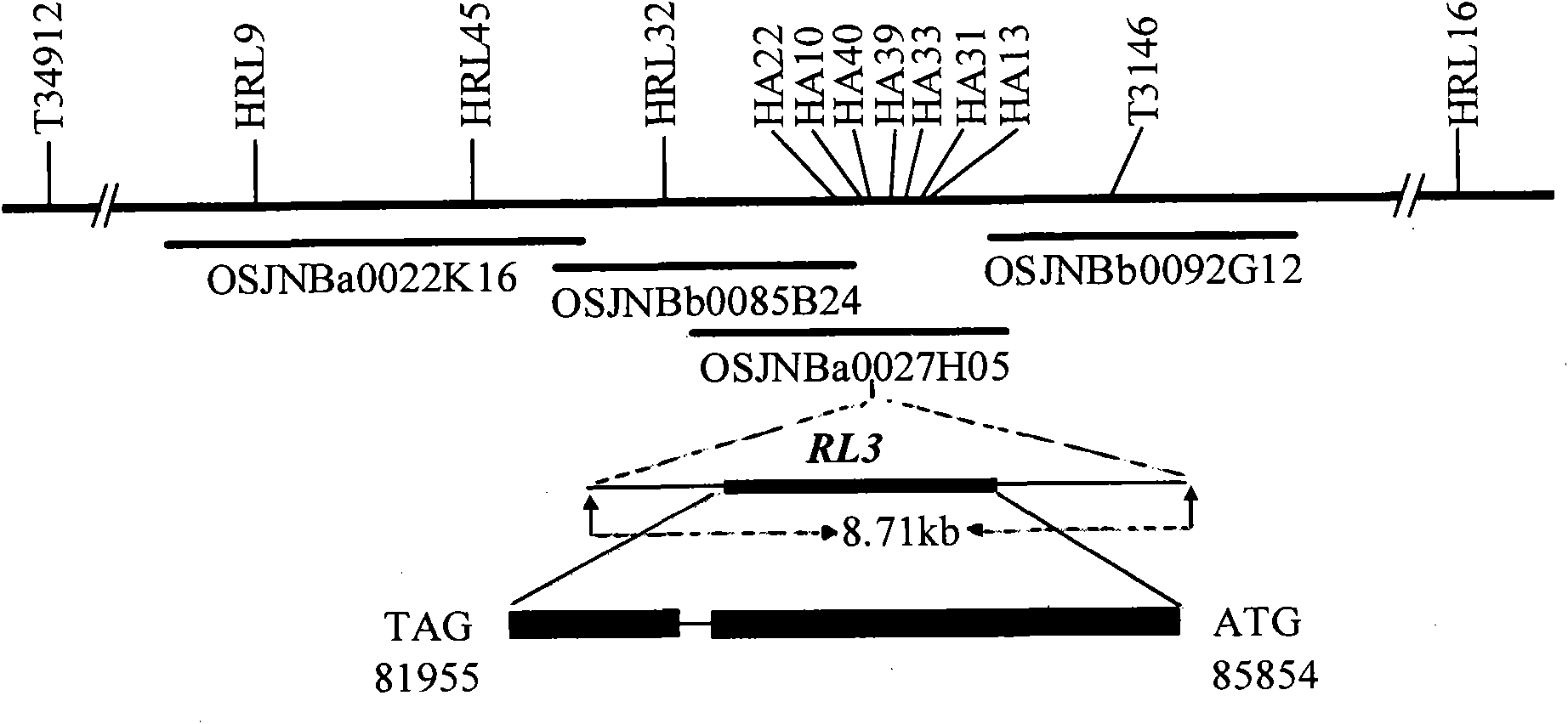Rice leaf-shaped regulatory gene NRL1 and application thereof
A technology for regulating genes and rice, applied in genetic engineering, plant genetic improvement, application, etc., can solve problems such as inability to prove practically, and achieve the effects of improving light energy utilization efficiency, improving leaf shape, and increasing yield
- Summary
- Abstract
- Description
- Claims
- Application Information
AI Technical Summary
Problems solved by technology
Method used
Image
Examples
Embodiment 1
[0041] 1. Rice material:
[0042] The three rice (Oryza sativa L.) narrow rolled leaf mutants nrl1 (narrow and rolled leaf 1) in the present invention are all obtained by EMS (Ethyl Methane Sulphonate) mutagenesis. Among them, the original wild material of nrl1-1 is the japonica rice variety Nipponbare. The allelic mutants nrl1-2 and nrl1-3 are japonica rice varieties Nipponbare and Wuyunjing 7, respectively.
[0043] 2. Analyze and target groups:
[0044] The homozygous nrl1-1 mutant was crossed with the indica rice variety Nanjing 6, F 1 Generation selfing, get F 2 population, and 1138 nrl1-1 mutant individuals were selected as the mapping population. At the tillering stage, about 1 gram of young leaves were taken from each plant to extract the total DNA.
[0045] 3. Molecular marker localization of NRL1 gene
[0046] Genomic DNA for gene localization was extracted from rice leaves by a rapid extraction method of rice trace DNA. About 0.2g of rice leaves were taken, fro...
Embodiment 2
[0060] Plant Transformation:
[0061] The SwaI restriction site was introduced into the multiple cloning site of the pCAMBIA1300 vector by PCR technology. The amplification primers were: F: CGAGGTTATGGATCCATTTAAATAAAATCTT, R: GGGAGCATGC CATTTGGTATTC, and the annealing temperature was 59.7°C-59.8°C. Among them, the front primer contains restriction sites of BamHI (G / GATCC) and SwaI (ATTT / AAAT), and the rear primer contains restriction sites of SphI (GCATG / C). Use this primer to PCR amplify Nipponbare genomic DNA, recover and purify a fragment of 498bp (named as SEQ ID NO: 3) after electrophoresis, carry out double enzyme digestion with BamHI and SphI on this fragment, and simultaneously use these two endonucleases to pCAMBIA1300 Carry out partial digestion of the vector, and then connect the products of the correct size fragments after the digestion of the two enzymes, so that the restriction site of SwaI is introduced after the multiple cloning site BamHI of the pCAMBIA1300 ve...
PUM
 Login to View More
Login to View More Abstract
Description
Claims
Application Information
 Login to View More
Login to View More - R&D
- Intellectual Property
- Life Sciences
- Materials
- Tech Scout
- Unparalleled Data Quality
- Higher Quality Content
- 60% Fewer Hallucinations
Browse by: Latest US Patents, China's latest patents, Technical Efficacy Thesaurus, Application Domain, Technology Topic, Popular Technical Reports.
© 2025 PatSnap. All rights reserved.Legal|Privacy policy|Modern Slavery Act Transparency Statement|Sitemap|About US| Contact US: help@patsnap.com



